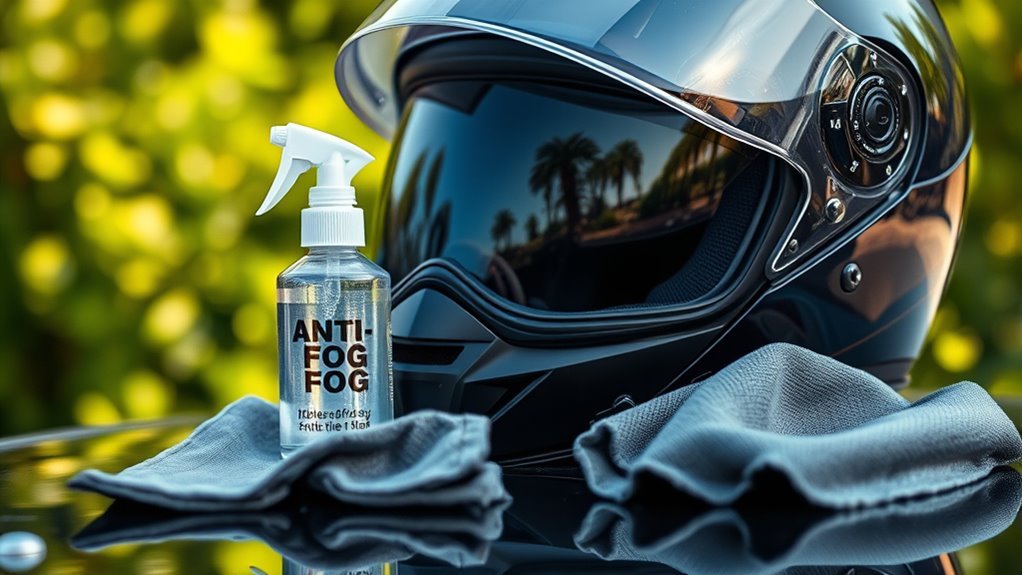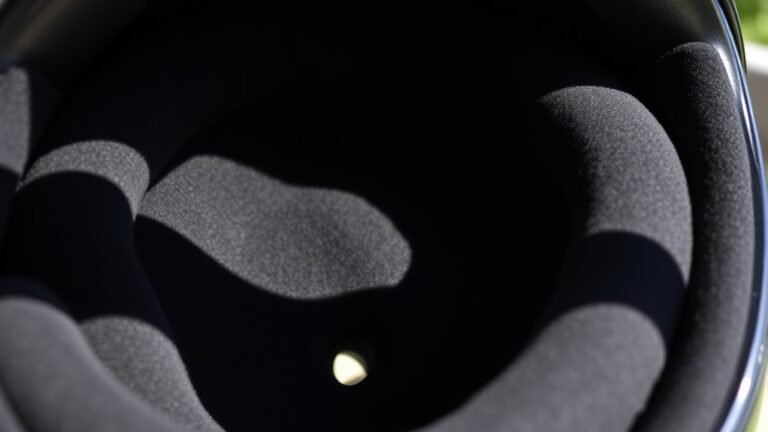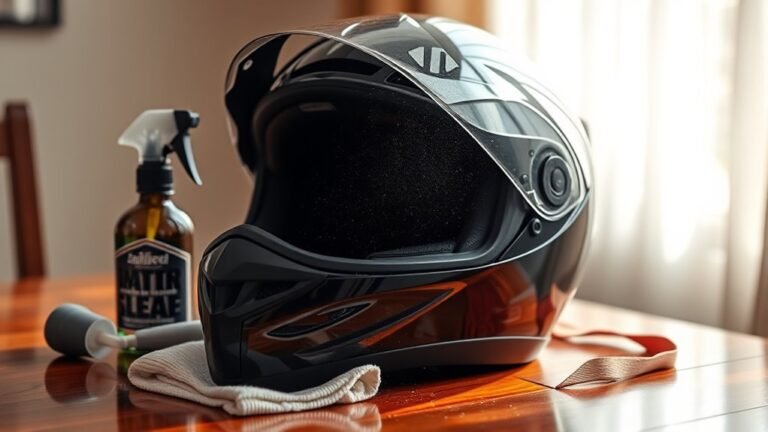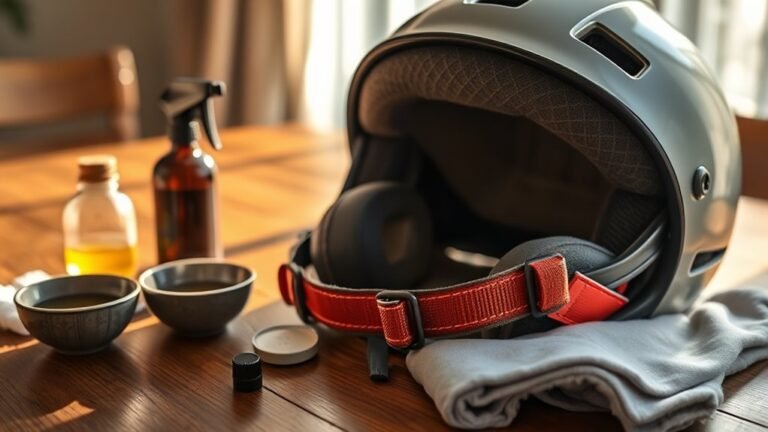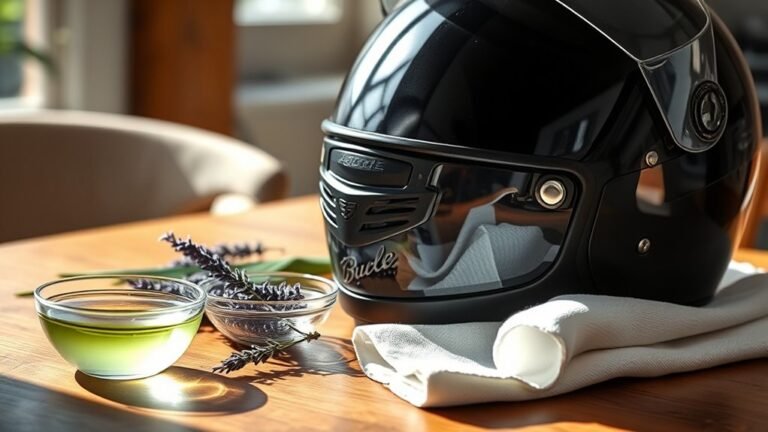How to Prevent Helmet Visor Fogging
To prevent helmet visor fogging, focus on managing temperature and moisture inside your helmet. Choose a visor made of anti-fog material and make certain it’s properly shaped for airflow. Apply anti-fog products like sprays or wipes regularly for added protection. Maintain good ventilation by adjusting vents and keeping chin vents open for air circulation. Consider different weather conditions while riding, as each can affect fogging. Explore more tips to keep your visor clear and enhance your riding experience.
Understanding the Causes of Fogging
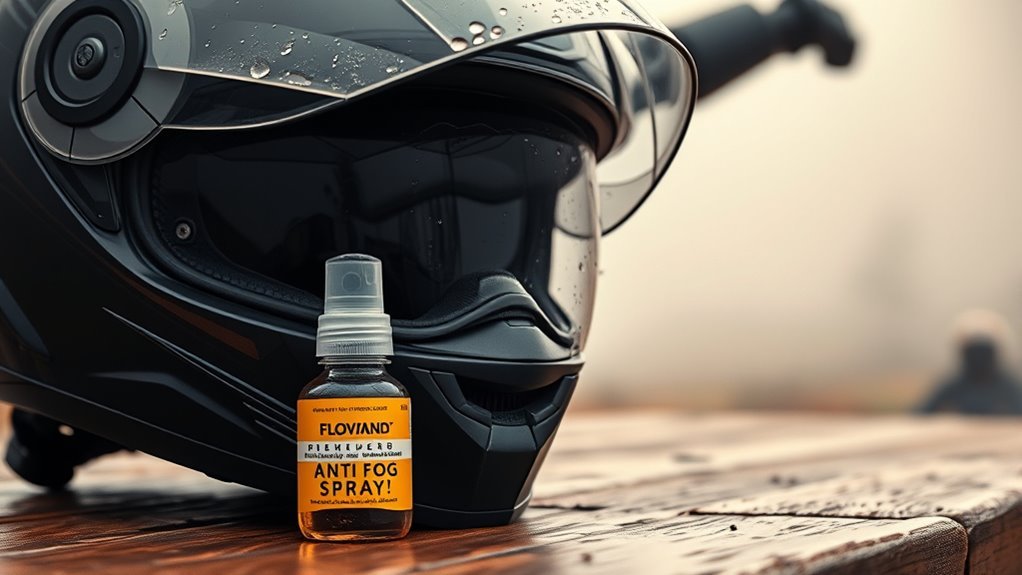
When you wear a helmet, you might notice fog forming on the visor, which can obscure your view and compromise safety. This fogging occurs primarily due to temperature differences between the inside of your helmet and the external environment. When you exhale or sweat, moisture buildup increases, creating a warm, humid microclimate inside the helmet. If the external temperature is considerably lower, condensation forms on the visor, leading to reduced visibility. Additionally, factors like humidity levels and airflow can exacerbate fogging. Understanding these causes is essential for maintaining clear vision and ensuring your freedom while riding. By recognizing how temperature and moisture interact within your helmet, you can better prepare for a safe and enjoyable experience.
Choosing the Right Helmet Visor
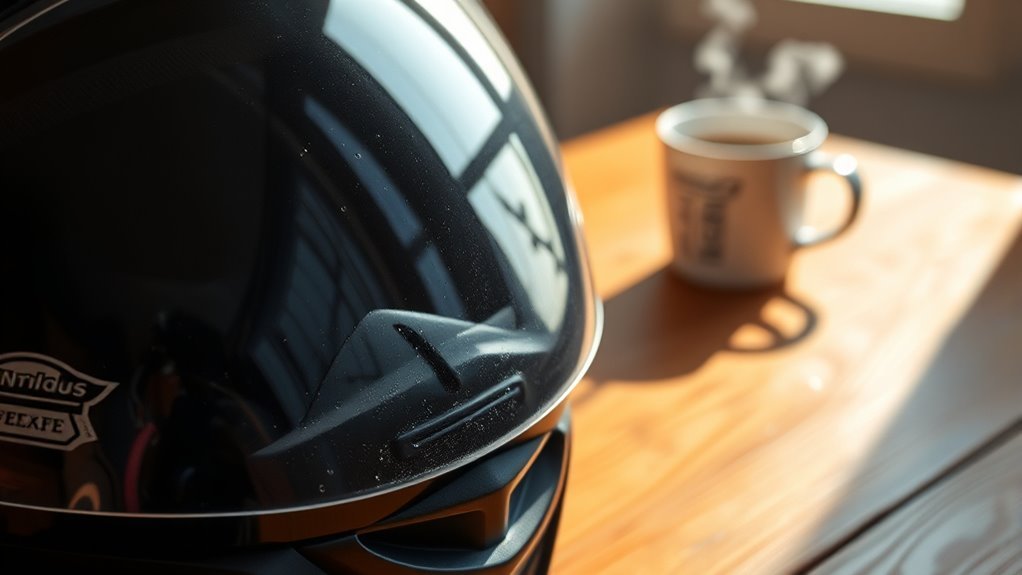
Choosing the right helmet visor is vital for ideal visibility and comfort while riding. You’ll want to take into account visor materials, as they greatly affect clarity and durability. Polycarbonate visors offer excellent impact resistance, while acrylic options are lightweight and affordable but may scratch easier.
Next, look at visor shapes. Some visors are designed for a wider field of view, enhancing peripheral vision, which is important for safety during rides. Others feature a more streamlined design to reduce drag at high speeds.
Ultimately, selecting the right visor material and shape not only enhances your riding experience but also minimizes fogging potential, ensuring you enjoy the freedom of the road without obstruction.
Anti-Fog Products and Treatments
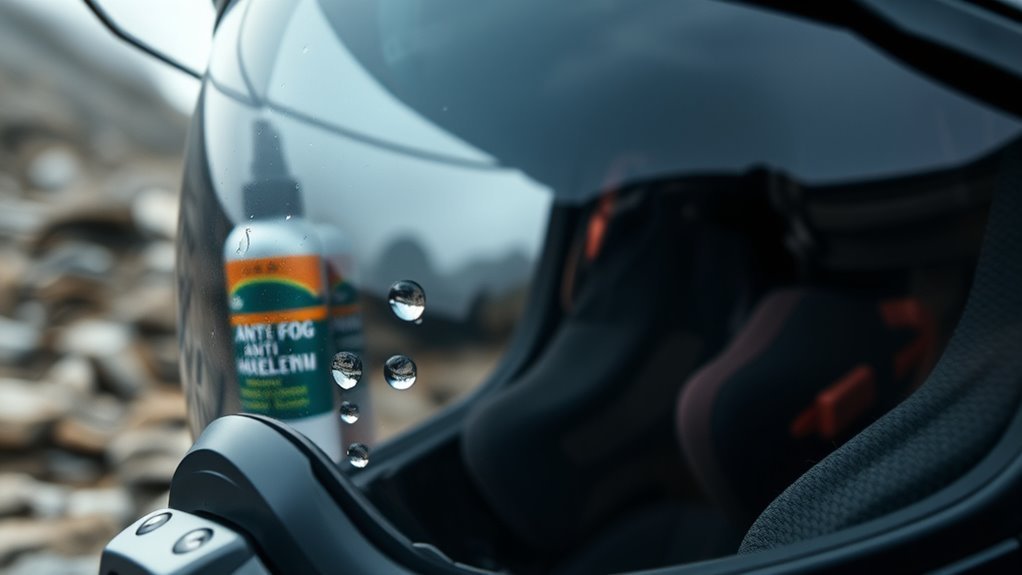
Although helmet visor fogging can be a frustrating issue, a variety of anti-fog products and treatments are available to help maintain clear visibility. Anti-fog sprays are a popular choice; they create a thin film on the visor that reduces moisture accumulation. Just spray it on, wipe it evenly, and you’re set for your ride. Alternatively, defogging wipes offer a convenient, portable solution. They’re easy to use and provide instant clarity by removing fog-causing residue. Both options can be effective, but remember to follow the manufacturer’s instructions for best results. By incorporating these products into your gear, you can enjoy a safer, more liberated riding experience without the distraction of foggy visors.
Proper Ventilation Techniques
Effective ventilation is essential for preventing helmet visor fogging, and there are several techniques you can employ to enhance airflow. Start by checking your helmet’s ventilation systems; they should allow fresh air to enter and stale air to exit. Adjust the vents to optimize airflow direction, directing air toward your face and visor. If your helmet has a chin vent, keep it open to promote air circulation. You can also consider adding an external visor with airflow channels designed to reduce fog. Additionally, try to maintain a consistent speed while riding; lower speeds can limit airflow and increase fogging. By implementing these ventilation techniques, you can enjoy a clearer view and a more liberated riding experience.
Tips for Riding in Different Weather Conditions
When riding in varying weather conditions, understanding how to adapt your gear and techniques is essential for safety and comfort. Here are some key riding tips to counter different weather effects:
| Weather Condition | Tips for Gear Adaptation | Technique Adjustments |
|---|---|---|
| Rain | Use waterproof gear | Reduce speed, increase distance |
| Cold | Layer up for warmth | Keep visor cracked for airflow |
| Heat | Wear breathable fabrics | Stay hydrated, take breaks |
| Wind | Secure loose items | Lean into the wind |
Frequently Asked Questions
Can I Use Household Products to Prevent Visor Fogging?
Yes, you can use household remedies to help prevent visor fogging. Common options include a mixture of dish soap and water, which creates a thin film that reduces fog. You might also try rubbing a potato on the visor, as the starch can provide a similar effect. However, dedicated anti-fog sprays are specifically designed for this purpose and often yield better, longer-lasting results. Always test any household remedy on a small area first.
How Often Should I Reapply Anti-Fog Treatments?
Think of anti-fog treatments like sunscreen; you need to reapply regularly to maintain their effectiveness. Depending on factors like humidity and usage, you should typically reapply every few rides or at least once a week for ideal anti-fog longevity. This treatment frequency guarantees your visor stays clear, allowing you the freedom to ride without distraction. Always check manufacturer guidelines for specific recommendations to get the best performance from your anti-fog solution.
Will Fogging Affect My Vision During Night Riding?
Yes, fogging can greatly affect your night visibility while riding. When your visor fogs up, it obstructs your view, making it harder to detect obstacles or other vehicles, which compromises your riding safety. The reduced clarity can lead to dangerous situations, especially at night when visibility is already limited. To maintain your freedom on the road, make sure your visor stays clear with effective anti-fog solutions and proper ventilation.
Are There Specific Visors That Resist Fogging Better?
Yes, some visors resist fogging better than others. Look for visors with anti-fog coatings that create a barrier against moisture. Visor materials like polycarbonate or treated plastic often perform well in preventing fog buildup. Imagine riding smoothly through misty landscapes, your vision crystal clear. Choosing the right visor can enhance your freedom on the road, allowing you to focus on the adventure ahead without the distraction of fogged-up lenses.
Can Helmet Shape Influence Fogging Issues?
Yes, helmet shape can influence fogging issues. A well-designed visor can enhance airflow dynamics, allowing air to circulate around the visor more effectively. If your helmet has a streamlined shape, it can help reduce stagnant air, which often leads to fogging. Additionally, visors with specific designs that promote airflow can further minimize moisture accumulation, keeping your vision clear and ensuring a safer, more enjoyable ride.
